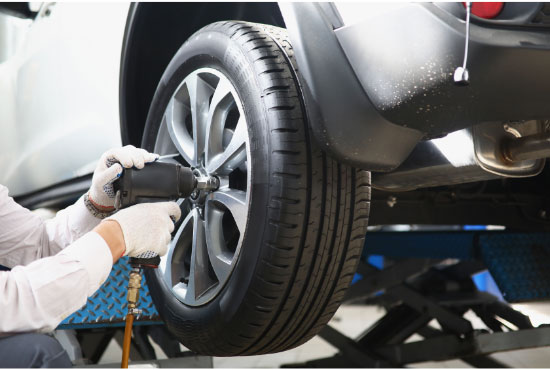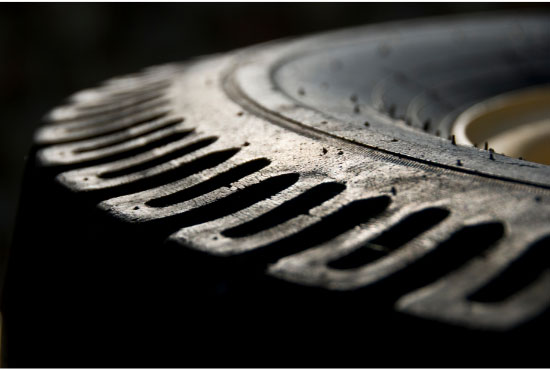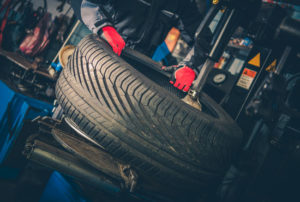When people start talking about the tires on their vehicles they often get confused by the series of letters and numbers written on the sidewalls of the tires.
The best information that I can give anyone buying tires is “when in doubt ask a tire specialist to recommend one for you”.
35×12.5R17 VS 315/70R17

These numbers are what you will see stamped on the outside wall of your tire. They tell you the size of the tires, the construction, width, and load range of the tire.
Reading Tire Sizes
The letters on the side of the tire each stand for a specific item. On a tire marked 315/70R17 the number and letter combinations tell us:
315 = the size of the tire
50 = tells you that the height of the tire is 50% of the width of the tire
R = radial so it tells us what the makeup of the tire is
17 = is the dimension of the wheel rim the tire is designed to fit on
Specifications of the 35×12.5R17 and 315/70R17
| Features & Specifications | 35×12.5R17 | 315/70R17 |
| Weight | 78 pounds | 65 pounds |
| diameter | 34.8” | 34.4 |
| Width | 13.2” | 9.5 |
| Rim-Range | 8.5 – 11” | 8 – 11” |
35×12.5R17
The 35 has an E traction rating. The E-rated tire can handle greater amounts of pressure so it is a better tire for use when towing.
Cons
- Some tire shops will not mount these tires on stock rims
315/70R17
The 315 has a D traction rating. That means that they can be run with lesser amounts of pressure in them to make the ride smoother and more comfortable. If you provide them with the full amount of pressure they can handle, about 65 psi, then the ride is rougher but it will increase their load capacity.
Cons
- You may need a lift kit
- Might increase fuel consumption
Understanding Tire Ratings

Tires are put through a series of tests to ascertain what features they possess and to make sure they meet the standards of excellence in place.
Ratings for Temperature
The temperature ratings of tires are assigned either an A, B, or C. This rating tells you how good the tire materials did with heat buildup.
To make this determination the tire is placed on a machine and it is rolled against a steel roller for a specific amount of time to make the tire material reach specified heat settings.
A tire that has a C temperature rating is run for two hours at a speed of 50 mph. Then the speed is increased to 75 mph for thirty minutes. Next, the speed is increased to 80 mph for another 30 minutes and finally, the speed is increased to 85 for an additional thirty minutes. This test was developed in 1968.
If a tire is given a B or an A it is because the test was run for longer periods of time and at higher rates of speed and the tire withstood the heat caused during the test.
Ratings for Speed
The ratings for speed are denoted by the letters S, T, H, and Z. There are some other letters used from time to time to indicate the speed rating of a tire but these are the four most frequently seen ratings applied.
The S is the lowest speed rating that a tire can be assigned. When given an S that means the tire is acceptable for traveling at speeds up to 112 mph without failing. That 112 mph is not applied to being driven for any specific amount of time.
The T-rated tire is supposed to maintain stability and not fail at speeds up to 118 mph. The H-rating tire is supposed to maintain stability and not fail at speeds of 130 mph. The final Z rating applies to tires that could be driven at speeds as great as 149 mph or more without failing.
The Traction Rating
The traction ratings are specified by the letters, “AA”. “A”, “B”, and “C”. These ratings indicate how much traction the tire should be capable of when driven over a wet surface.
The Tread Wear Rating
The treadwear rating is given in numbers starting with the lowest at 100, and then each higher number tells you the tire tread should last longer than the simple 100.
If a tire is given a 200 it should have tread that will last twice as long as the tread on a tire with a 100 rating.
The Benefits and Drawbacks of using bigger Tires
When you get bigger tires you get certain benefits that help you drive on the terrain you cover the most often. The bigger tires will usually get better traction because there is more tire touching the road surface.
- Bigger tires also increase the ability to cover rough terrain or to drive through deeper water.
- The larger tires may increase the handling and response of your vehicle in specific situations
If you do decide to get bigger tires you will also find that there are some drawbacks associated with these tires.
- Your fuel mileage is going to be reduced by the larger tires. The larger tires weigh more than the smaller tires and the increased amount of weight will cause your vehicle to use more fuel than you are used to it using.
- You need new rims which may be expensive.
- Bigger tires may require lift kits, new springs, new shocks, or other components. You should never install a lift kit on a vehicle without asking the advice of a professional.
- Your vehicle may not accelerate as quickly after you change to larger tires. The strain of the added tire weight may stop the vehicle from being able to drive as fast as it once did.
- Tire size interferes with the gear ratio and you could be creating transmission problems by going up in tire size
- Bigger tires often rub especially when you are turning or going over bumps in the road. The larger tires may not last as long as the original tires that the manufacturer recommended for the vehicle.
- Larger tires do not increase the comfort of the ride.
- The bigger tires are more expensive to buy. The price difference in larger tires may be a lot more than the smaller tires.
- Larger tires are often noisier than smaller tires.
People Also Ask
Are 35” Tires The Same as 315s?
These tires are considered to be the same size.
What Does The 12.5 Mean on The Side of The Tire?
This number simply tells you that the width of the tire is 12 and one-half inches.
What Width Should My Rims Be for 35” Tires?
The width of the rims should be 17”. Lesser width rims work better with 33” tires.
Final Thoughts
Tire sizes can be confusing. One of the best rules of thumb that you can follow is to always use the same size tire that came on your vehicle because the manufacturer has chosen the proper tire for fitment and service. If you want to change your tire size it is recommended that you speak to a tire and suspension specialist to determine what tires you can use without making any changes.

